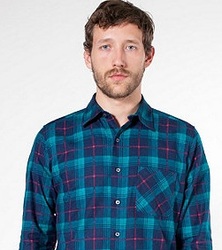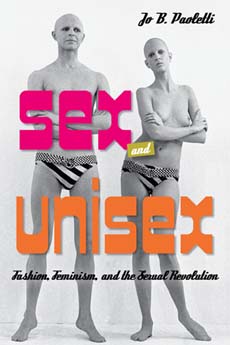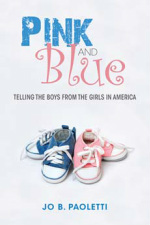The draft heads to IUPress and out for review. In a few months, I'll get reviewers' comments and revise the draft. Hopefully, Sex and Unisex will be out in early 2015. In the meantime, watch this space for more posts about gender and appearance, ranging from news items to snippets that were left out of books 1 and 2 to previews of Book 3 (oh yes!). The working title is Age Appropriate, and it will be about how women over 50 deal with gendered cultural expectations. Stick with me!
|
With the first draft of Book 2 (Sex and Unisex) complete, I want to take a few minutes to express my gratitude. Karin Bohleke of the Fashion Archives and Museum at Shippensburg (PA) University let me spend two days looking for images, and has been sending additional lagniappes all summer. My Facebook and Twitter communities have been supportive and generous with comments and encouragement. None has been more of a champ than Eliza, a sister in microbrew love who offered to read the (very rough) draft and contributed valuable comments, questions and corrections. My friends and family in real life have been patient beyond belief, given that my writing mode is pretty antisocial. (Special shoutout to Jim, Katie, MaryBeth and Sandy, the stalwarts of the Franklin's Regulars). The folks at Indiana University Press are awesome, full stop. Every author should be so lucky as to work with such pros. I also want to thank the software wizards behind the tools that make my writing life a joy. I would be completely lost without Scrivener, Index Card and Zotero. No lie. What's next?
The draft heads to IUPress and out for review. In a few months, I'll get reviewers' comments and revise the draft. Hopefully, Sex and Unisex will be out in early 2015. In the meantime, watch this space for more posts about gender and appearance, ranging from news items to snippets that were left out of books 1 and 2 to previews of Book 3 (oh yes!). The working title is Age Appropriate, and it will be about how women over 50 deal with gendered cultural expectations. Stick with me! This is an absolutely fantastic analysis of "unisex" garments on the American Apparel website by Swedish blogger Emilie Frida Eriksson. She compares the photos of men and women in several different button-down shirts (Warning! NSFW!) and concludes, "No. I think I’ll give this shirt a miss. Cos I kinda think I want to wear pants with it." Unisex is ungendered on sexually ambiguous bodies in ungendered poses. Outside of those limits, it can be damn sexy!
(Great idea for a book, don't you think?) I can't resist sharing my favorite warning about the dangers of pants for women, from none other than physician Robert Bradley, author of the very-popular Husband-Coached Childbirth. I strongly feel that the current rash of vaginal infections is related to women dressing in men's-style clothing. I'm an old square who thinks women look graceful and feminine in long skirts with lace and frills to accentuate their femininity. Pioneer women wore long skirts with no underclothes--at least for working--and had far fewer bladder infections than modern women who wear slacks, especially tight, rigid denims, and panty hose. In addition, the exercises of squatting and tailor sitting can be performed so much more easily in a large, loose skirt than in tight-fitting slacks. This was a popular "science-based"argument in the 1960s and 70s for why women should not wear pants. (Strangely, it was not used to discourage us from wearing underpants!) Later studies found trousers innocent on all charges; instead the major culprits were nylon panties and pantyhose.
Indiana University Press is having a huge back-to-school sale on many of their titles -- 40%-60% off from August 15-September 15, 2013! You can get great prices on Pink and Blue and support academic publishing at the same time! Enter code SCHOOL at checkout to receive discount and qualified free shipping within the US. (For the complete sale list, which includes lots of great books about gender, check out the SALE page.)
For the first time since I started this blog, I'm going to recycle an old post. I wrote "Pink and Blue" because I got tired of answering the same question over and over and over. Apparently, just writing a book doesn't effect an immediate mind meld between author and reader. Who knew? I do hope more people do read the book; more and more libraries have it, and as academic tomes go, it's pretty cheap. It's not just about pink and blue. That's just one chapter. Want to know when pink became girly? Here's the short version, originally posted 1/3/2012.
If you asked someone in the fashion industry, unisex was a fad that came and went in one year: 1968. For that brief moment, the fashion press hailed gender blending as the wave of the future, and department stores created special sections for unisex fashions. Most of these boutiques had closed by 1969. However, in the more mainstream realm of Sears, Roebuck catalogs and major sewing patterns, “his ‘n hers” clothing – mostly casual shirts, sweaters and outerwear – persisted through the late 1970s. The difference between avant-garde unisex and the later version is the distinction between boundary-defying designs, often modeled by androgynous-looking models, and a less-threatening variation, worn by attractive heterosexual couples. Also: one more chapter to go! Huzzah!!!
I am still drafting the context chapter of the book, and thankfully, it is beginning to make sense. Or at least I think it is, so I'll post a bit here are see what y'all think. Don't be shy! This comes after a paragraph about the inability of sex researchers to take into account their own culturally-induced biases. I use the familiar metaphor of the fish trying to understand water, which is often used to describe the difficulties encountered when we try to examine our own culture. Reformers, advocates and activists working to expand civil rights were essentially trying to change the dimensions of the fishbowl. The Declaration of Independence and Constitution of the United States of America offer definitions of human rights that initially promised more than they delivered to many people living within our borders. The civil rights movements in our history have been efforts to include people who had been excluded from the promise of “life, liberty and the pursuit if happiness” offered in 1776 and the guarantee of “equal protection under the law” added in 1868. This may seem heady, serious stuff for a book on fashion, but it was the civil rights movement that made clothing and hair into national, contentious issues. Much of the fashion controversies centered on issues of gender expression and gender equality, which raised different questions for women and men, and for adults and children.
Many of the initial questions were seemingly trivial. Why can’t girls wear slacks to school? Why must men always wear ties, which seem to serve no practical purpose? Why do so many dresses button or zip up the back? Why can’t a boy wear his hair long just like the Beatles? Why do I have to wear white gloves and a hat just to go shopping downtown? Why is it cute to be a tomboy but not a sissy? If these sound like children’s questions, maybe it’s because at first they were. I remember puzzling over these and many other rules when I was growing up. The answers were even more puzzling – and annoying! “That’s just the way it is.” “Because I said so.” Culture, and the authority of grownups. In the 1960s, the Baby boom generation started to question more and push back harder, along with some allies in older generations. They were aided and abetted by a consumer culture that may have been more interested in their buying power than in cultural and political change.  The writing life ain't pretty. Four l-o-n-g chapters in and, four weeks to go before my deadline, someone asking for a headshot is lucky not to get this one --------> It's Saturday (whatever that is) and my summer cold has moved from my throat to my chest. I dream about being at the computer, writing. No naked men, no magical creatures, just me and the laptop. I'm looking forward to having this book done, mainly because I can't wait to see how I pull it off. Writing about history feels like a collaboration between the evidence and the storyteller (that's me). The challenge is that life -- the events that become "history" -- happens to millions of people at a time, and the storyteller must simplify it enough to be intelligible, but not so much that you lose the complexity that gives life its flavor.
My bio might say "dress historian", but clothing is just the way I learn about life. Pink and Blue was about the lives of parents and children, not about baby dresses and rompers. As someone who has been a kid and parent, it was about my life, but just a teensy bit, since it covered over a hundred years of history. Sex and Unisex is about the lives of people who experienced the 1960s and 1970s, so it totally intersects with my life. At the same time, I want it to connect with readers under 35, whose lives today are still buffeted by the turbulence of that era. So I write, and cough, and drink throat-soothing tea, and write some more, as the story unfolds in my head and on my screen. Wish me luck. |
Jo PaolettiProfessor Emerita Archives
January 2023
Categories
All
|




